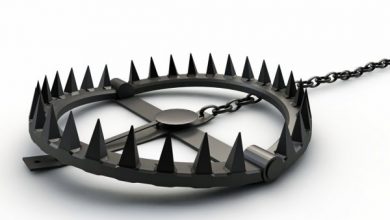
Beatrice Garland is an English author who published “Kamikaze” in her collection The Invention of Fireworks in 2013. For her, poetry is a medium to communicate individual responses to various life situations and different elements of the world. While her poem on the outset is a narrative about a soldier who returns halfway from his mission- choosing life over death- which is perceived as an act of cowardice for a man belonging to the military profession, a careful reading of her verse opens a gate to a more enlightening interpretation that involves an exposition of societal conditioning and the conflict between personal life and national duty.
Kamikazes were military aircraft commissioned for suicide attacks during World War II under the Japanese Special Attack Units. As far as the structure of Kamikaze is concerned, the poem is a free verse composition divided into seven stanzas consisting of six lines each. Lack of punctuation and multiple enjambments give it an overwhelming tone colored by contemplation, conflict, and regret.
Kamikaze | Summary and Analysis
Kamikaze | Analysis, Lines 1- 6
Her father embarked at sunrise
with a flask of water, a samurai sword
in the cockpit, a shaven head
full of powerful incantations
and enough fuel for a one-way
journey into history
The poem begins with a third-person address by the speaker to herself as she narrates about her father who was a kamikaze pilot. Instead of simply describing her father with the personal pronoun “my,” the speaker opts for a third person pronoun to establish her distance from him as a consequence of his actions which are later spilled in the poem. The father embarks on his mission at sunrise which symbolizes a new day and hence a new beginning coupling with Japan’s identity as the ‘land of the rising sun.’ The only two things he carries along are a “flask of water” which is the basic element of survival and an important marker that shapes the trajectory of the poem further, and a “samurai sword” which is a weapon denoting blood and death. Ironically, these two function as opposites for the pilot where the former is a source of life and the latter as an end to it.
Along with the material objects, philosophical and moral obligations also journey along with him which reside as “powerful incantations” in his “shaven head.” This suggests how men in the military are fed with beliefs and responsibilities that often transform into blind faith and following. They are ripped off of their own individuality in the course of dutiful obedience which sometimes even demands to sacrifice their own lives for national integrity. So water, sword, and the powerful chant he relies on for sustaining his life for a stipulated amount of time are overpowered with the marker of his sure death- the fuel which will only suffice a one-way journey and guarantee his no return.
The first stanza is devoid of punctuations that reflect a smooth flow of thoughts. There are alliterations in the 2nd and 5th lines- “samurai sword” and “enough fuel for.”
Kamikaze | Analysis, Lines 7-12
but half way there, she thought,
recounting it later to her children,
he must have looked far down
at the little fishing boats
strung out like bunting
on a green-blue translucent sea
The enjambment establishes a turnaround in the poem which the speaker recounts in her later life as a part of her storytelling venture, an oral art popular in Asian cultures. As the speaker’s father reaches halfway to his destination, she assumes (an interpretation hint by the verb “must”) her father to have looked down at the “green-blue translucent sea” where numerous “fishing boats” appeared as a “bunting” (simile).
The natural imagery the sea provides as the background to the colorful boats in a line is like a bunting springs attraction to the pilot. His suppressed desires to live and enjoy life in all its shades couldn’t hide anymore. He begins to appreciate life and this moment becomes the moment of contemplation for him to reconsider his decision. So the nature below pulls him towards itself like a magnet. Thus, he’ll be now caught up in a dilemma where life and national duty do not coincide with one another.
Kamikaze | Analysis, Lines 13-18
and beneath them, arcing in swathes
like a huge flag waved first one way
then the other in a figure of eight,
the dark shoals of fishes
flashing silver as their bellies
swivelled towards the sun
The enjambment in this stanza continues the marine imagery with a simile to compare the fishes which are swimming under the boats in a waving flag movement. Their bodies are upturned as their bellies look directly at the sun, rendering them a silver sparkle. The phrase “arcing in swathes” produces an electrifying image that charges the spirits of the pilot and energizes him to come to a decision. However, the evocation of a flag is a simultaneous reminder to him concerning his national and military commitments. The “figure of eight” resembles the sign of infinity – his actions would be remembered through the medium of storytelling. The natural beauty here thus inspires emotions and the capacity to love life which a soldier is always taught to be wary of. The last three lines employ sibilance giving them a musical note.
Kamikaze | Analysis, Lines 19-24
and remembered how he
and his brothers waiting on the shore
built cairns of pearl-grey pebbles
to see whose withstood longest
the turbulent inrush of breakers
bringing their father’s boat safe
The aquatic life ignites memories from the past for the pilot which the enjambment further exhibits. He along with his brothers used to engage in activities like cairn building while waiting for their father’s boat safely back to the shore.
The “dark shoals” in the previous stanza and the “pearl-grey pebbles” in this stanza work together to bring out a gloomy scenario that aims at holding tight to the idea that death is still lurking around amidst the pilot’s pleasurable memories. While cairns serve as signs for a burial ground and navigation, here it also becomes a symbol of balance which the pilot now seems to haze over. Withstanding the cairns despite the forces against them, it is a clear representation of the pilot’s wavering stance to continue his mission. The poem later reveals how he fails to withstand the temptations of life and drops his mission. He chooses safety over death. Like his father’s boat that returns safely to the shore, the pilot wishes to return safely home to his family.
Kamikaze | Analysis, Lines 25- 30
– yes, grandfather’s boat – safe
to the shore, salt-sodden, awash
with cloud-marked mackerel,
black crabs, feathery prawns,
the loose silver of whitebait and once
a tuna, the dark prince, muscular, dangerous.
The enjambment with caesura to emphasize the safety of the speaker’s grandfather impresses a hope for the safe return of the pilot too. The first two lines of this stanza again employ sibilance to mirror the water movements and everything associated with it. The fishing boat brings a variety of sea creatures for a delicious meal along with a tuna which is a wild predator in the ocean’s ecosystem and hence an important sea creature. So, hunting a tuna becomes equivalent to seizing power, which in this poem operates politically, socially, and emotionally as well. Also, while the return of the boat is celebrated, the return of the pilot’s aircraft would not be as it will bring with it the societal conventions of shame and dishonor.
Kamikaze | Analysis, Lines 31- 36
And though he came back
my mother never spoke again
in his presence, nor did she meet his eyes
and the neighbours too, they treated him
as though he no longer existed,
only we children still chattered and laughed
Coming back in the first line of this stanza refers to both the pilot’s withdrawal from his memories as well as his journey back to his home. The conjunction “though” connotes unhappiness and unexpectedness on the part of his family, ironic to what a return of a soldier should have been otherwise welcomed by. The speaker’s mother does not speak to her husband because of the shame she now has to bear. This is the first time the speaker employs the first-person pronoun. The silent treatment was passed down to his neighbors as well. One can assume the wife’s silence as a pressurized act of the society she exists in. To live in a community peacefully, one has to adhere to its dictates and code of conduct which often involves sidelining one’s own beliefs. Only the children are preserved from the expectations. They continue to live as they do.
Kamikaze | Analysis, Lines 37-42
till gradually we too learned
to be silent, to live as though
he had never returned, that this
was no longer the father we loved.
And sometimes, she said, he must have wondered
which had been the better way to die.
The enjambment in the last stanza works with the passage of time that passes with children including the speaker growing up and learning “to be silent.” Their system- both moral and educational, conditions them to treat the pilot with similar resentment as everybody else. His existence is entirely ignored and adopting the third person again, she wonders about her father’s own predicaments regarding the “better way to die.” He must have weighed down the scenarios where he literally dies as a kamikaze pilot and the other picture in which he is dying every day metaphorically. His return does not turn out to be what he imagined. All his efforts and sacrifices prove futile because his family and his community do not cherish his return but rather pass him scornful glances. The choice of individuality over commonality or herd mentality does not pay him well.



